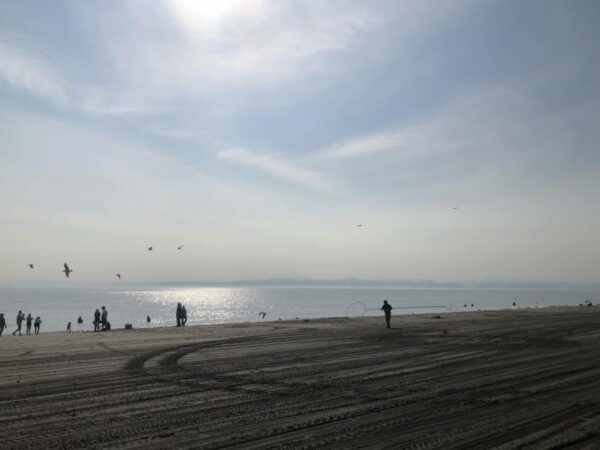
A heat wave in the Lower 48 cooked shellfish alive on Pacific Northwest beaches and triggered excessive-heat warnings in several states. Climatologists say it’s because of a dome of heat that drove temperatures high above 100 degrees Fahrenheit and skirted part of Southeast Alaska.
Southcentral Alaska hasn’t seen that kind of heat. But could scorching heat waves be in the region’s future?
That answer is complicated, said Brian Brettschneider, a research physical scientist with the National Weather Service Alaska Region.
“A very short answer is, in a warming world, we expect every place to have a higher probability of seeing record-high temperatures,” he said. “And the Arctic warms faster than everywhere else. So we expect those record highs to be even more likely in high-latitude areas like Alaska.”
[Sign up for Alaska Public Media’s daily newsletter to get our top stories delivered to your inbox.]
Brettschneider said heat waves are relative. What’s considered hot in Alaska is different from what’s considered hot Outside.
As of Tuesday, for example, there was still an excessive heat warning for parts of Montana. That means temperatures could climb past 105 degrees and stay that way for two hours or more.
“That can’t ever be issued for Alaska,” Brettschneider said. “It’s not in the toolbox of things that can even be issued in Alaska because it’s assumed that it can’t get hot enough here to issue a heat advisory.”
But while Southeast Alaska hasn’t seen 100-plus-degree weather, the region has experienced its own extraordinary temperatures.
And Anchorage, where Brettschneider is based, saw daily records on Friday, Saturday and Sunday of 76, 79 and 81 degrees, respectively.
“I would say in the southern mainland — so, say, south of the Alaska Range — three days in a row where it’s 75 degrees … I would say that’s probably a heat wave,” he said.
Kenai temperatures were relatively high this weekend, too — in the low-to-mid 70s. But they didn’t set daily records.
Brettschneider said it’s important to look at long-term trends to get the full picture of how the climate is changing.
Overall, this summer has been one of the colder ones the region has had in the last few years. But when compared with summers over the last several decades, it’s still among the hottest.
Climate experts took the long view in a study published this month, which found that the heat wave in the Pacific Northwest was a “thousand-year event.” That means there’s a 1-in-1,000 chance it could be that hot in a given year.
“So in a way, it might be better to say, ‘What would a 1-in-1,000 year event in today’s climate in Alaska look like?’ And the short answer is: I have no idea,” Brettschneider said.
Climatologists say that the 1-in-1,000 number is adjusted to today’s standards. In a pre-warmed climate, they say, the likelihood for such a heat wave would be 150 times lower.




